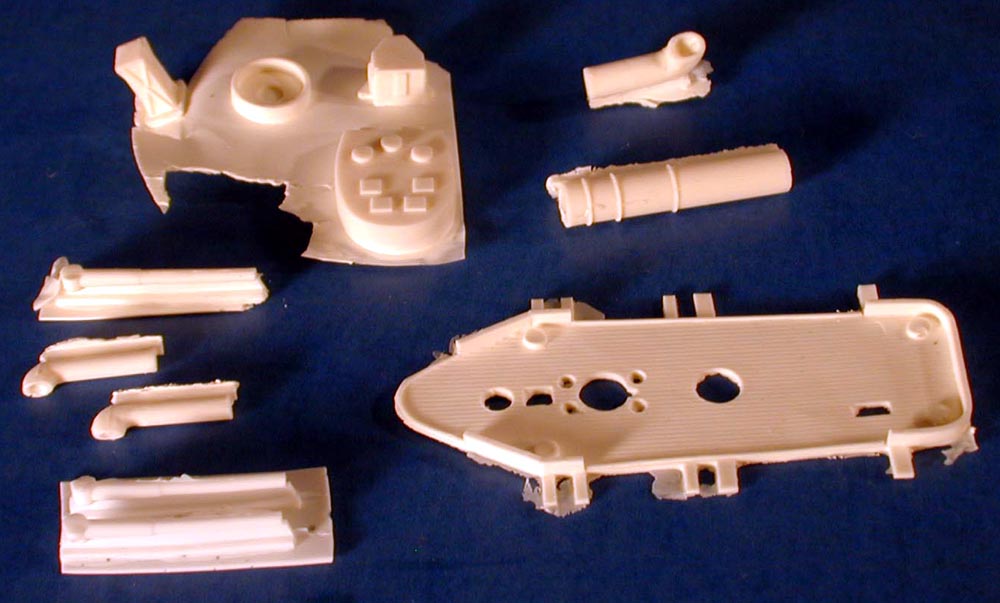Monitor class battleships Arkansas / Wyoming / Florida / ConnecticutUSS Monitor Wyoming / Cheyenne (BM-10)An interesting monitor, not because of its history, which is fairly mundane, but because it was the last American monitor and the first Navy ship to be powered by fuel oil instead of coal.
"The USS Wyoming was the second US Navy ship to bear this name, but the first to do so in honor of the 44th state. The first Wyoming was named after the Wyoming Valley in eastern Pennsylvania.
Wyoming was ordered on May 4, 1898 and awarded to Union Iron Works, San Francisco, on October 5, 1898. The keel of Monitor No. 10 was laid on April 11, 1898. She was launched on September 8, 1900, sponsored by Miss Hattie Warren, daughter of Senator Francis E. Warren of Wyoming, and commissioned at Mare Island Shipyard , Vallejo, California , on December 8, 1902. The total cost of hull, machinery, armor and fittings was $1,624,270.59.
In 1909, the ship was renamed Cheyenne to free up her original name for a new battleship, and given the hull number M-10, which was changed to BM-10 in 1920 and finally to IX-4 in 1921. She was finally sold for scrap in 1939.
USS Wyoming (Monitor No. 10) had a relatively unremarkable career as the last of a type of ship that had seen its heyday in the US Navy almost half a century earlier. Wiki."
JM CAIELLA.
https://www.usni.org/magazines/naval-hi ... t-her-linehttps://chroniclingamerica.loc.gov/data ... 1/0432.pdf
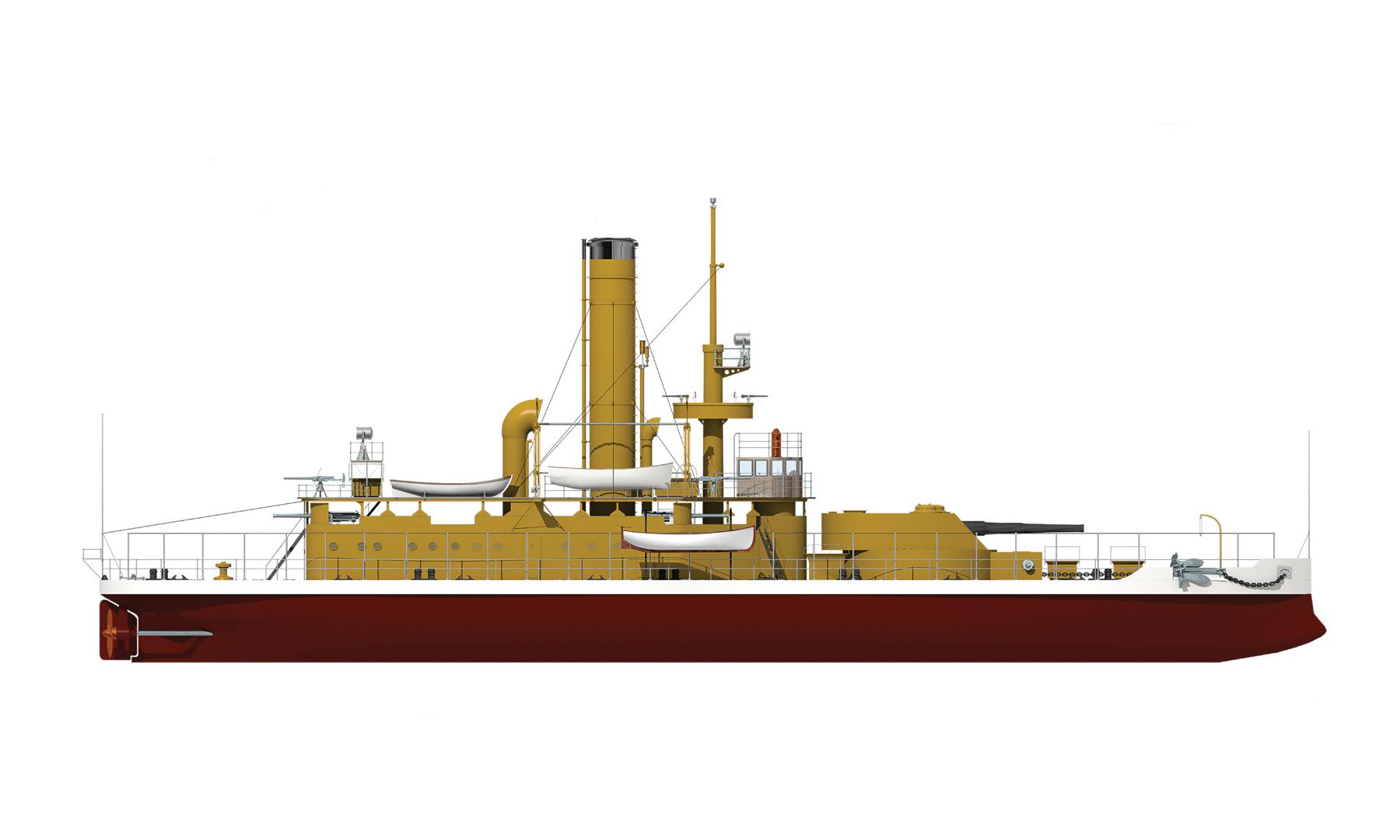
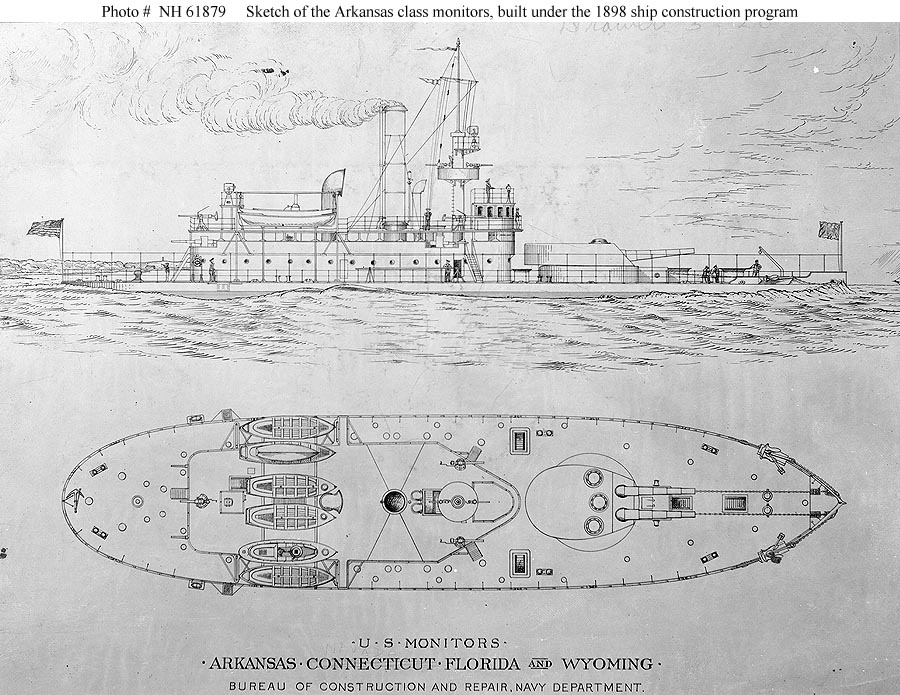
Ships become historic for a variety of reasons. Some have left an indelible mark on the nation's history. Others have been heroically fought for by their crews, as just another ship in a battle, in a war. Still others mark milestones in nautical history - the first of a type, the largest, the fastest. The ship presented here marks another landmark. Its only historical claim is to be the last of its kind, with the exception of a few pretenders during the Vietnam War. In all likelihood, her sister ships will never again sail with the U.S. Navy.
When the unclassified auxiliary ship Cheyenne (IX-4) was struck from the Navy list on January 25, 1937, the monitor as a type of warship ceased to exist in the service. What remained of her hull was demolished in the spring of 1939. She was the last in a line of 71 ships begun 76 years earlier by John Ericsson's famous USS Monitor. The Monitor's heyday in the U.S. Navy lasted around four years, during the Civil War. Indeed, 85% of those that served in the Navy were built between 1861 and 1865. Of the ten built after the war, five (albeit new ships) were ostensibly reconstructions of Civil War veterans. Only five "modern" monitors were built.
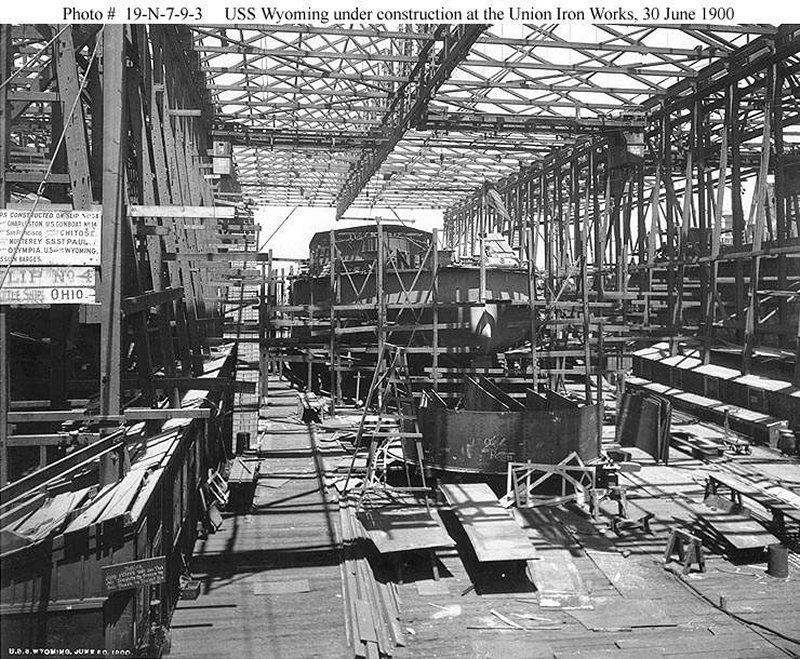
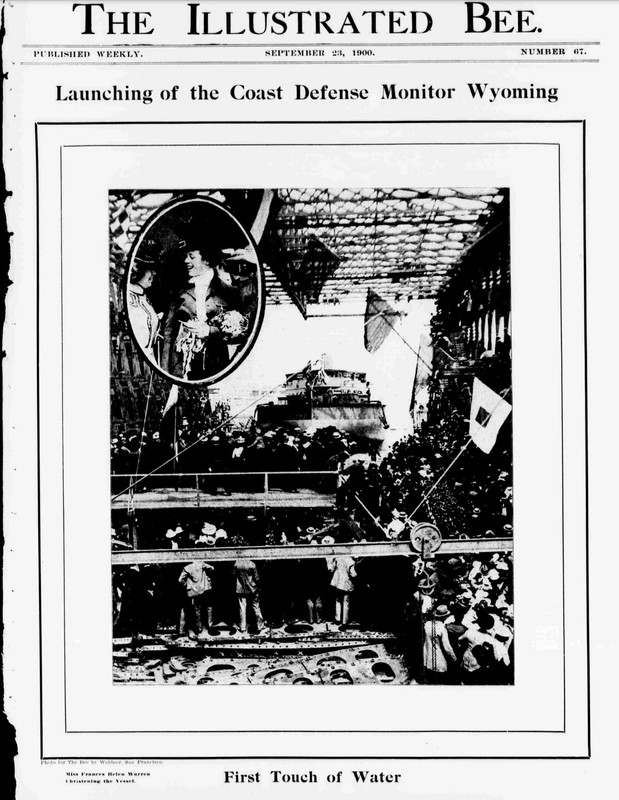
This type of vessel was characterized by a very low freeboard - sometimes less than a meter above the water - and a heavily armored hull carrying one or two rotating armored turrets equipped with heavy guns. Despite some ocean crossings, monitors were not very seaworthy warships. Their favor with Congress and the public rested largely on the memory of what the original had done against the CSS Virginia in 1862. Congress continued to buy them as coastal defense vessels despite the greater utility and combat capabilities of armored cruisers and emerging battleships.
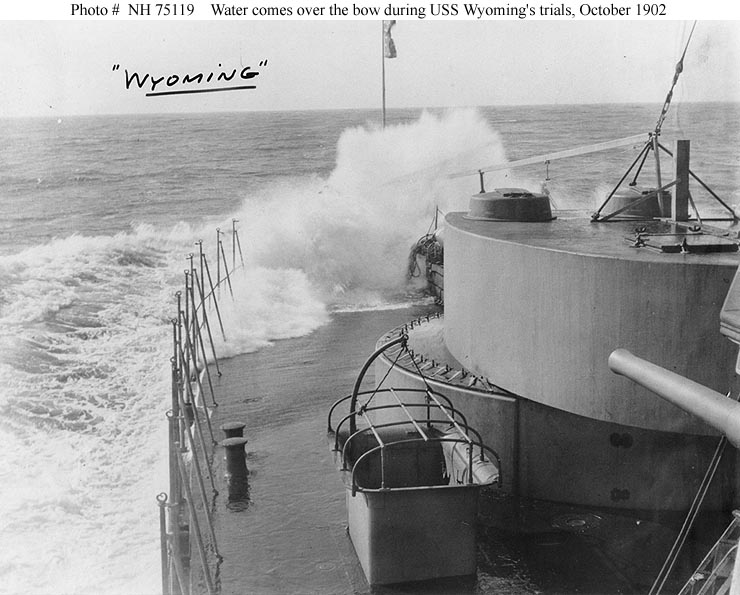
The last surviving American monitor was built as Wyoming (Monitor No. 10) on April 11, 1898 at the Union Iron Works in San Francisco, and commissioned four years later, on December 8, 1902, at the Mare Island Navy Yard. His experience over the next few years is a time capsule of naval life over a century ago, when showing the flag in combat was offset by showing it at dinner parties.
View of the starboard bow of the USS Wyoming (Monitor No. 10) during trials in 1902
The Wyoming, photographed during trials off San Francisco in October 1902, could reach a speed of 12.4 knots. Note that her bow is almost under water in calm waters.
NAVAL HISTORY AND HERITAGE COMMAND
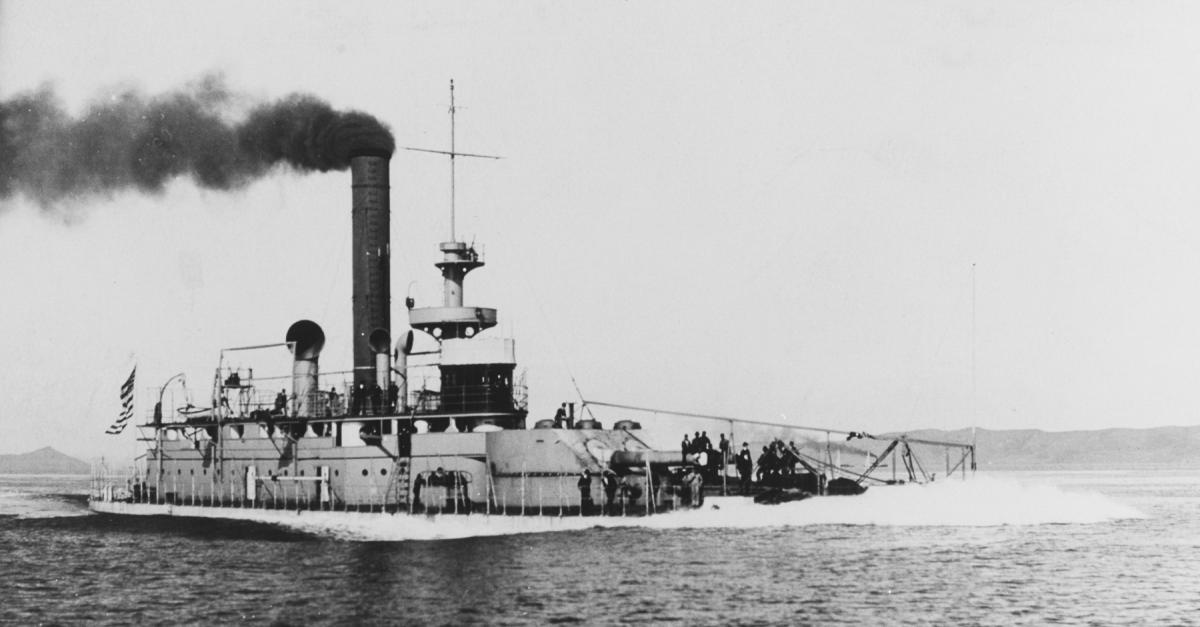
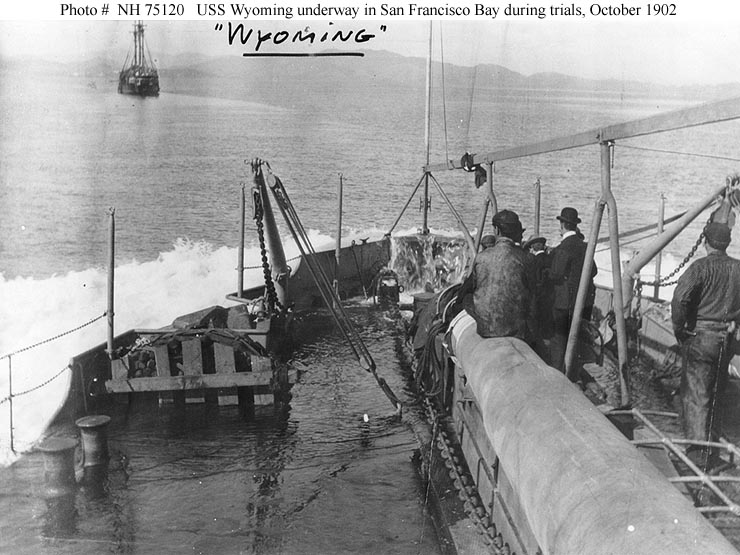
She carried out trials in 1902 and 1903, firing targets off the Californian coast until the end of the latter summer. She headed south in the autumn, reaching Acapulco, Mexico, on October 31, but soon received orders for Panama. At the beginning of the year, the United States and Colombia signed the Hay-Herrán Treaty, granting the Americans a 99-year lease on the Panama Canal Zone. But the Colombian Senate rejected the treaty, arguing that it would increase payments. On November 3, Panamanian separatists declared the country's independence, and Colombia retaliated by threatening to invade the country to recover its lost province. Wyoming and its Marines, along with the protected cruiser Boston, arrived on November 13 to support the revolution and delay the invasion until other forces could arrive. The Bluejackets rescued American nationals, while the Marines made their presence felt inland. On Christmas Eve, the landing force returned to the ship. The Monitor remained in Panama Bay until April 19, 1904, when it headed for Acapulco and then home, reaching San Diego on May 14.
During the summer, she visited Ventura County with the new torpedo destroyers Paul Jones (No. 10) and Preble (No. 12), anchoring offshore for three days. The officers were feted at a reception and ball at the Ventura Armory, and the Wyoming Marines paraded down Main Street led by the city band. Later, all participants were invited to a barbecue.
Wyoming continued its public relations tour 12 miles off the coast in Port Hueneme for two days, before heading north to Santa Barbara. The ship stopped there at the request of Henry T. Oxnard and his wife. The Wyoming's captain, Commander (later Rear Admiral) Vincendon L. Cottman, was a cousin of Oxnard, the president of the American Beet Sugar Company, later the American Crystal Sugar Company.
The Oxnards hosted a dinner and barbecue at McGrath Beach, near the town of Oxnard, for the officers. Afterwards, according to one newspaper, the commander and his officers "returned the compliment to their hosts and escorted all who wished to navigate the choppy waters to the monitor, where its wonders were duly explained and examined."
For the rest of the year, Wyoming's West Coast voyages extend from California to Washington and Oregon. On June 27, Wyoming, Paul Jones and Perry (torpedo destroyer No. 11) visit Portland, where headlines announce that "curious crowds throng the warships" and "thousands visit the sinister little fleet", with Wyoming the "center of interest and a marvelous ship". Two days earlier, however, the trio had anchored briefly at the foot of 11th Street in Astoria, much to the chagrin of the local paper: "The warships came and the warships went. Despite the reputed enthusiasm and patriotism of the people of Astoria, they refuse to remain anchored off the city long enough to give the citizens a chance for inspection."
The Monitor returned later in the summer, however, and took part in Astoria's tenth annual regatta from August 22 to 27, its Marines leading Governor George E. Chamberlain in the main parade. On October 21, he took part in the dedication ceremonies for the 1859 Pig War memorials at Griffin Bay and Roche Harbor on San Juan Island, Washington, before entering the Puget Sound Navy Yard in Bremerton the following day for refit.
She remained there until January 1905, when she returned south to Panama and Mare Island, where she was decommissioned on August 29. Re-commissioned in October 1908, she soon reached the pinnacle of her naval career. But this too was short-lived. She was again refitted, but this time to run on fuel oil instead of coal, making her the first US Navy ship to be so equipped. Trials of her new steam power plant lasted until March 1909. During this period, on January 1, she was renamed Cheyenne to free herself from the state name for the future battleship No. 32. Her new status as an oil tanker, however, did little to improve her service. She was again decommissioned on November 13. The monitor spent the rest of her career in and out of service, and thus behind the scenes in the Navy.
The auxiliary submarine USS Cheyenne and three submarines in San Diego in 1914.
The former Wyoming (right), since renamed Cheyenne, has three of her Second Torpedo Flotilla charges alongside her, probably in San Diego between 1914 and 1917. From left to right: H-3 (submarine no. 30), H-1 (submarine no. 28) and H-2 (submarine no. 29). Note the 13-star submarine flags and the sailor seated on Cheyenne's port anchor.
NAVAL HISTORY AND HERITAGE COMMAND

Recommissioned as a reserve ship on July 11, 1910, Cheyenne was assigned to the Washington Naval Militia in 1911 and operated, in service and reserve, until early 1913, when she was fitted out at the Puget Sound Navy Yard as a submarine tender. On August 20, 1913, the monitor regained full officer status. She operated along the West Coast as a tender until 1917, diverting twice in the spring of 1914 to transport refugees from Mexico to San Diego. Transferred to the Atlantic Fleet, she served mainly in the Gulf of Mexico during the First World War. From January to October 1919, continuing unrest in Mexico following the revolution led to a naval presence in Tampico, in which Cheyenne took part. On her return, she was transferred to the Philadelphia shipyard, where she was decommissioned on January 3, 1920, and reclassified as an IX-4 on July 17. Two months later, she was again rearmed and towed to Baltimore, where she was assigned to training duties with the Naval Reserve Force until 1925. In January of the following year, she was towed to Philadelphia, where she was decommissioned for the last time on June 1, 1926.
Colonel R. D. Heinl Jr. of the Marine Corps wrote in 1961: "In the old reserve dock at the Philadelphia Navy Yard, where I attended Marine Corps Basic School in 1937, there remained a monitor [...] nestled in oblivion among the four-father destroyers of World War I [...]. . . One winter afternoon, in the company of another lieutenant, I climbed aboard with a flashlight and we explored the old ship, from reciprocating engines to her antique 12-inch twin turret, apparently hand-operated, with huge hand cranks attached to rust-ridden racks and gears. [Would I be the last officer on active duty in the navy or marines to set foot on the deck of a monitor?
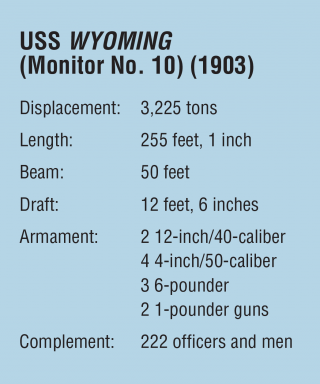 https://www.navsource.org/archives/01/wyominga.htm
https://www.navsource.org/archives/01/wyominga.htm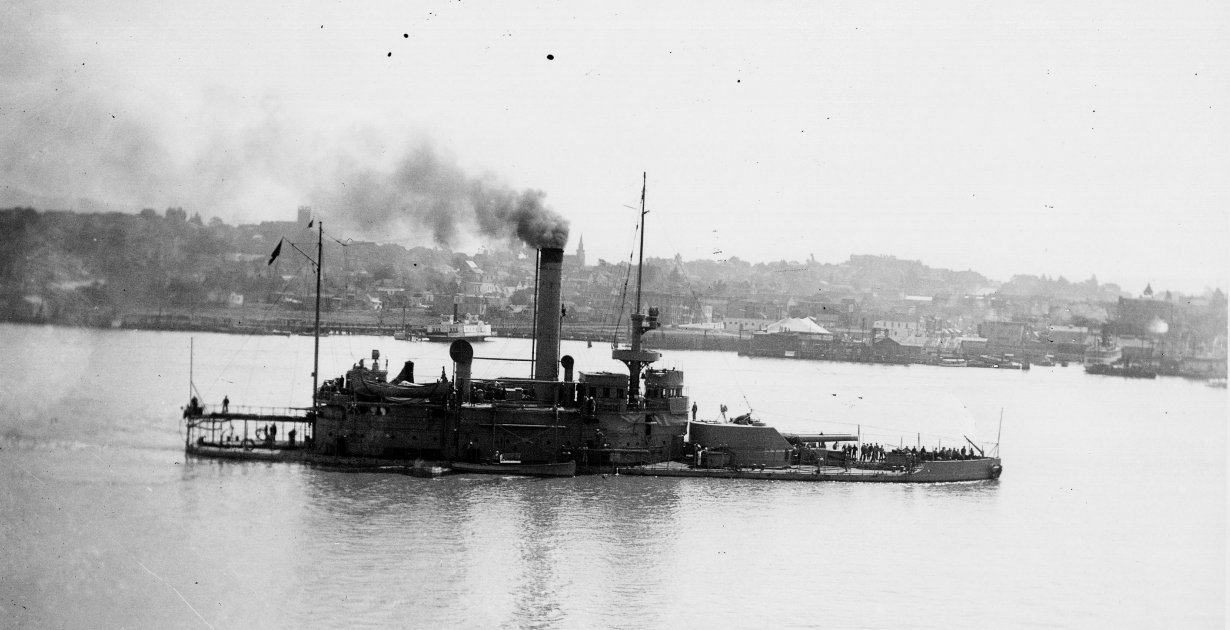
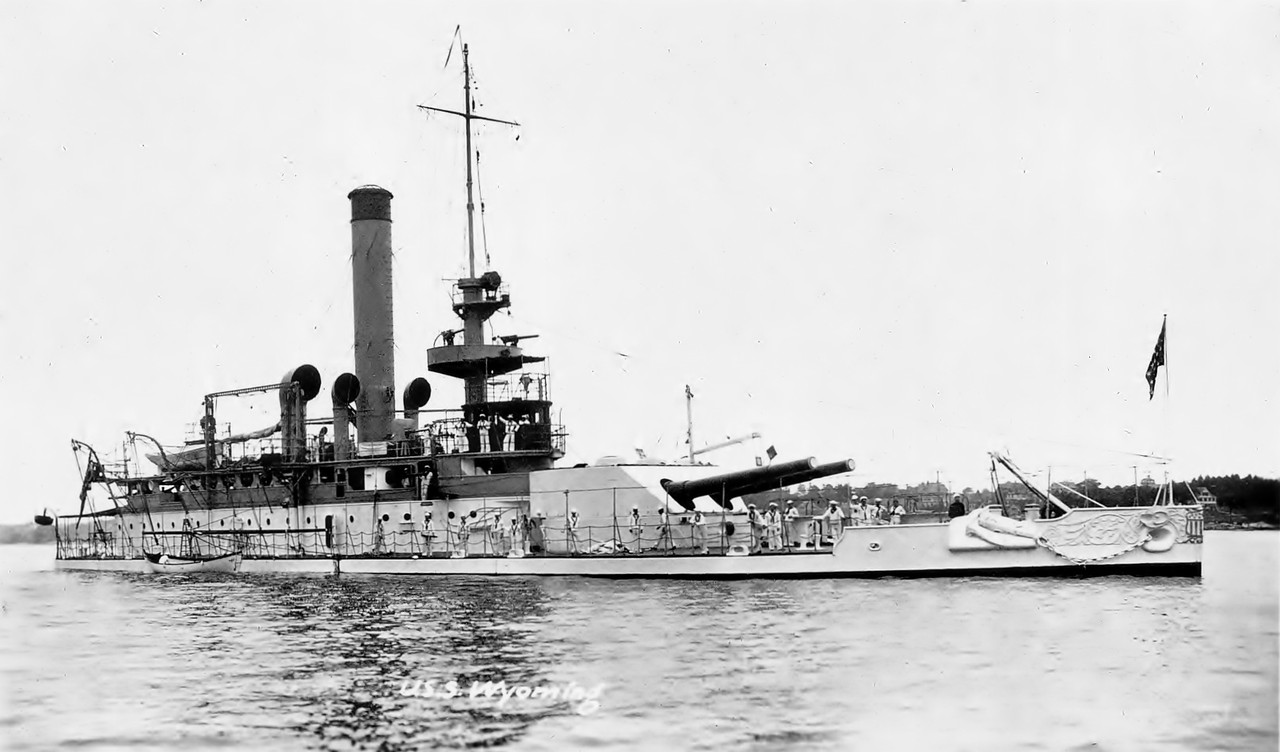
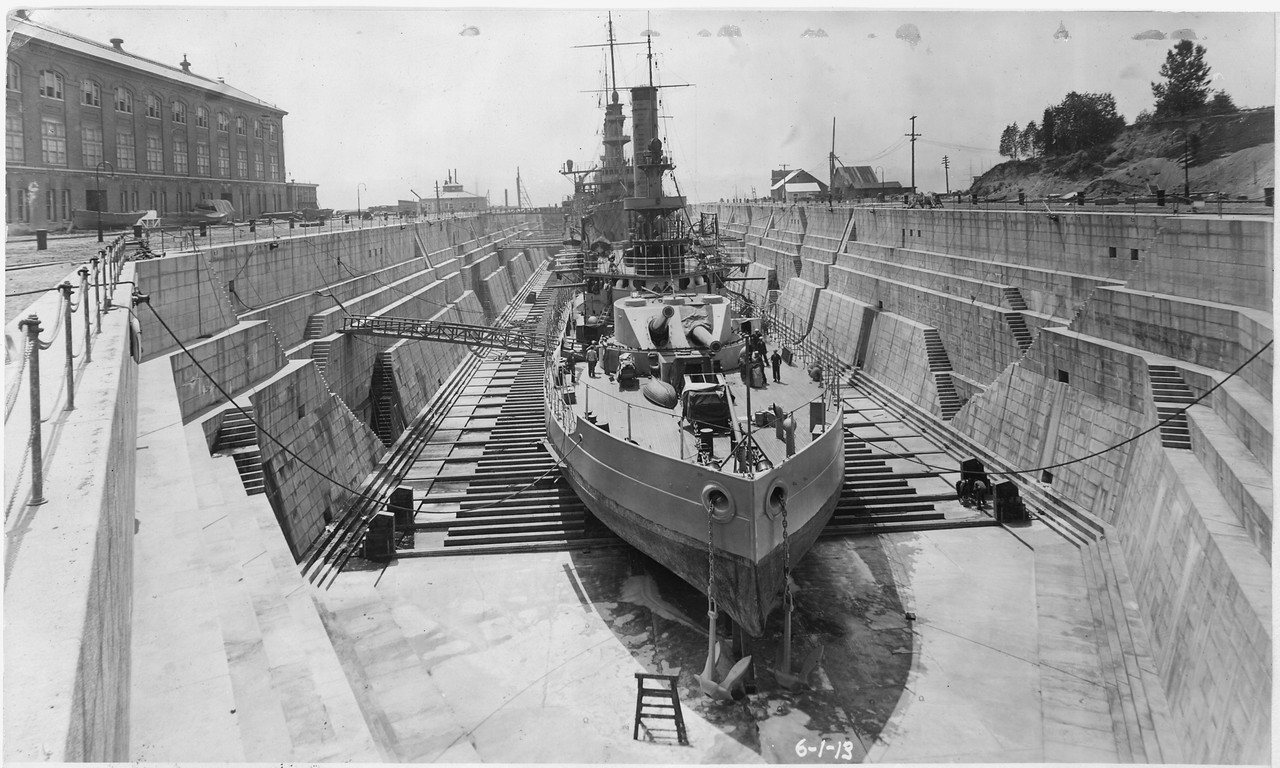

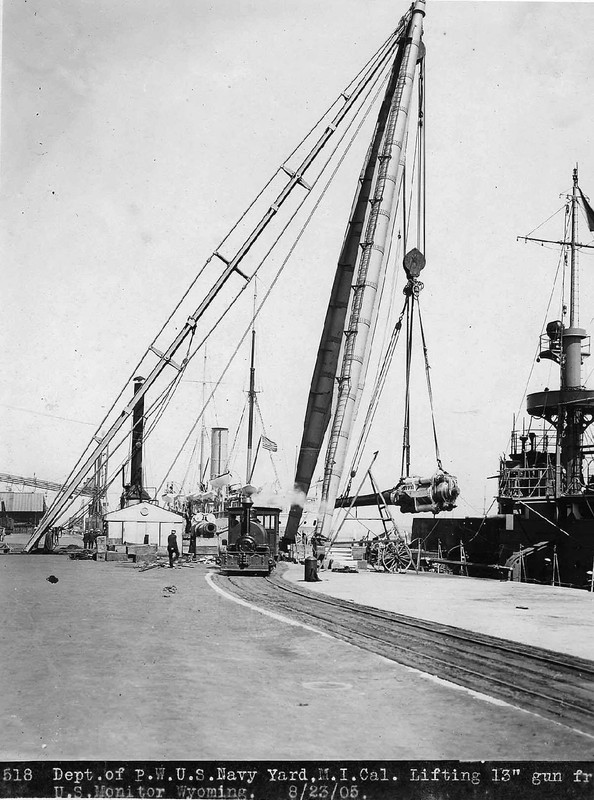
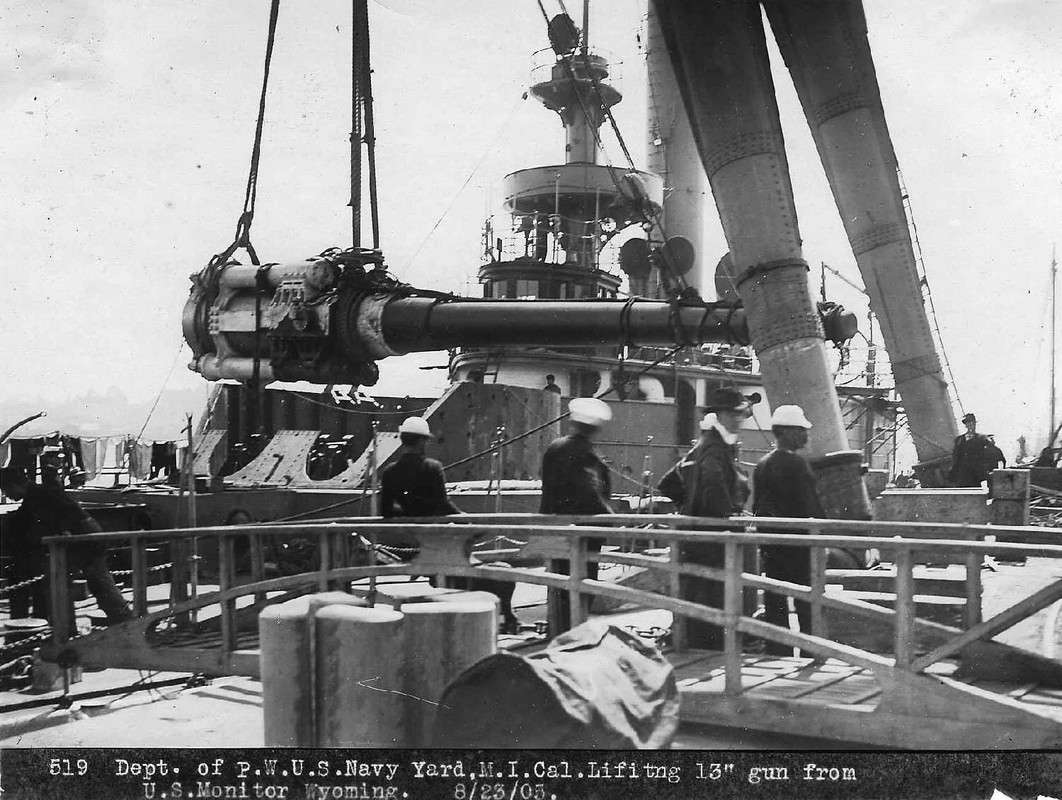
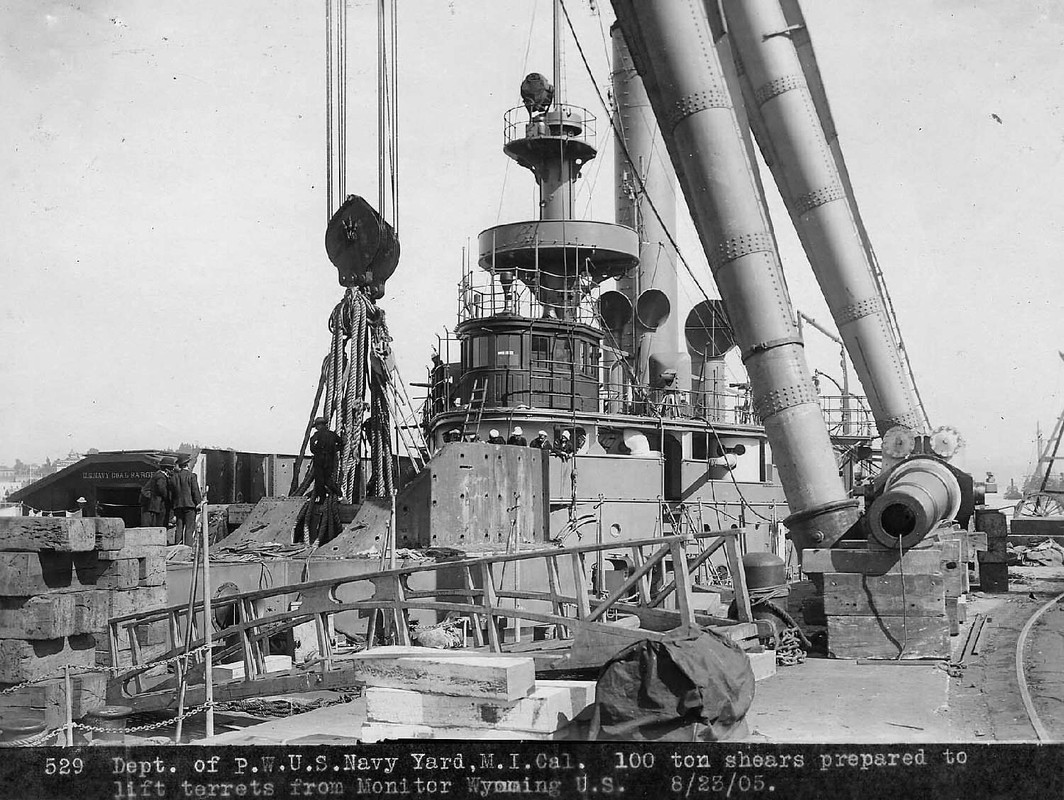

The USS Wyoming was later named Cheyenne, to free up the name for a newly built battleship.

USS Wyoming / Cheyenne (BM-10)
https://www.militaryfactory.com/ships/d ... ted-states
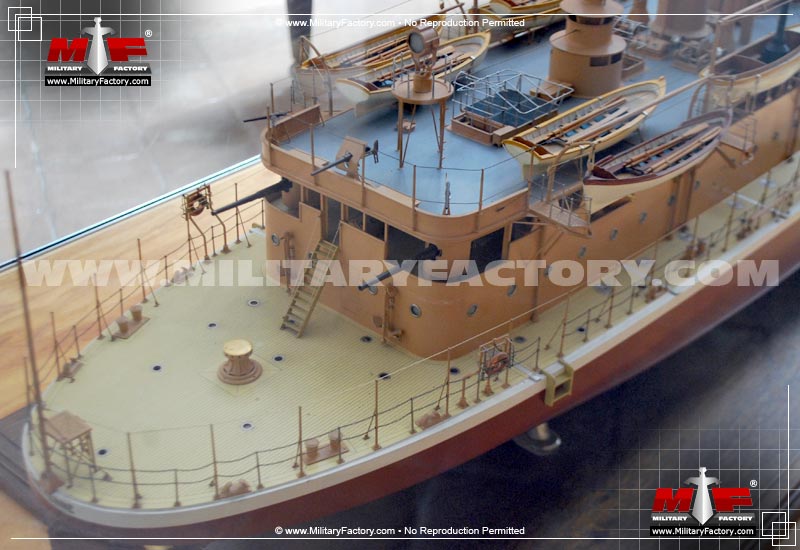

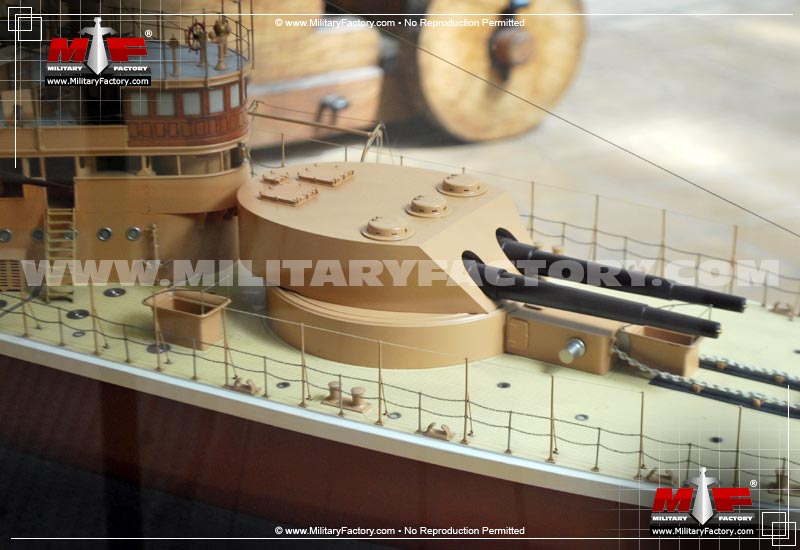
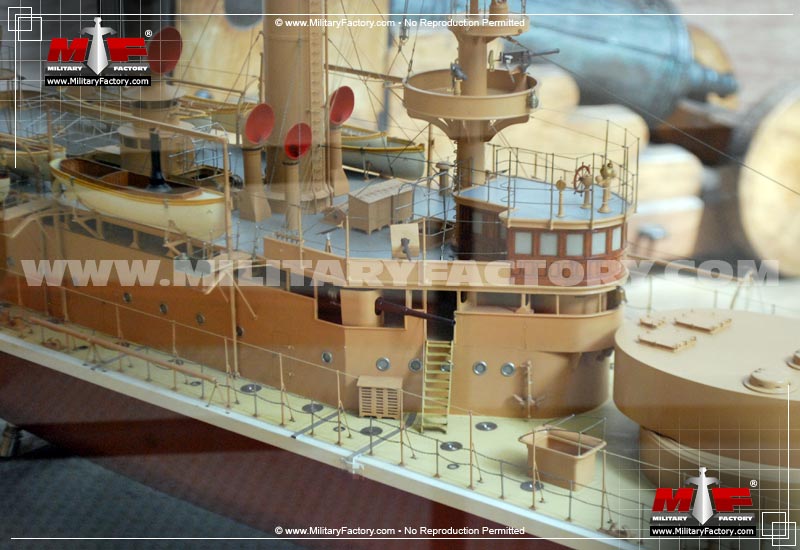

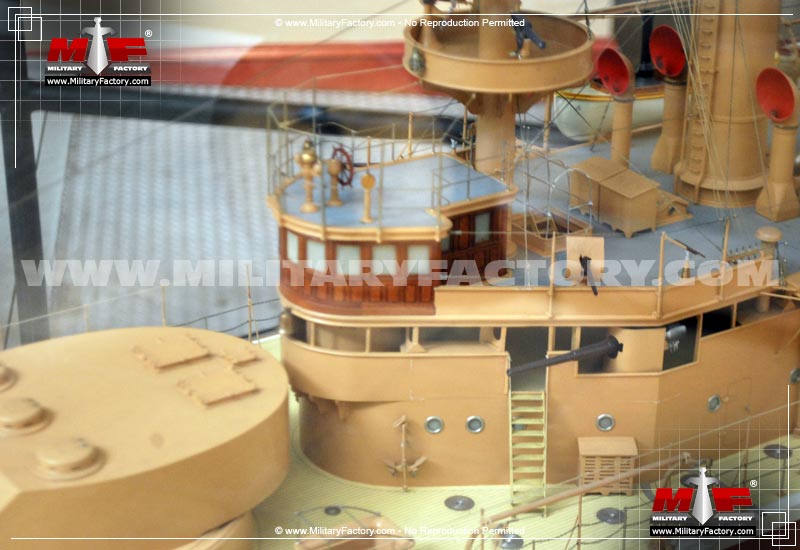
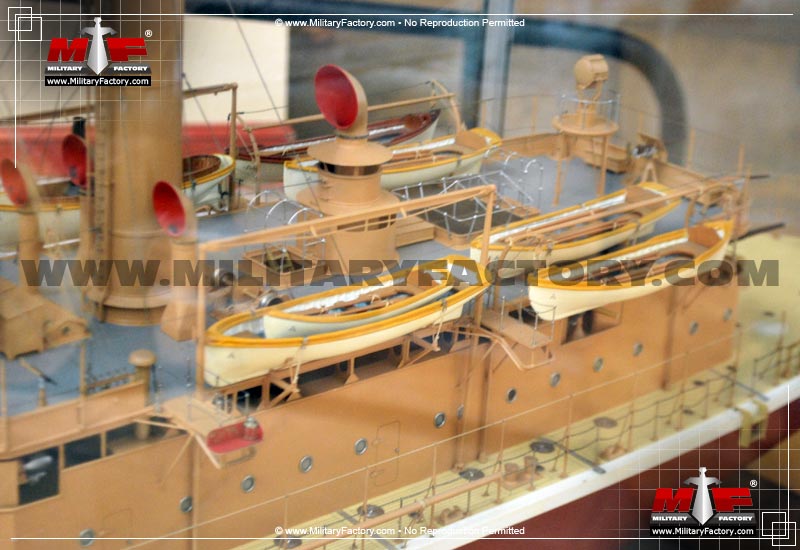
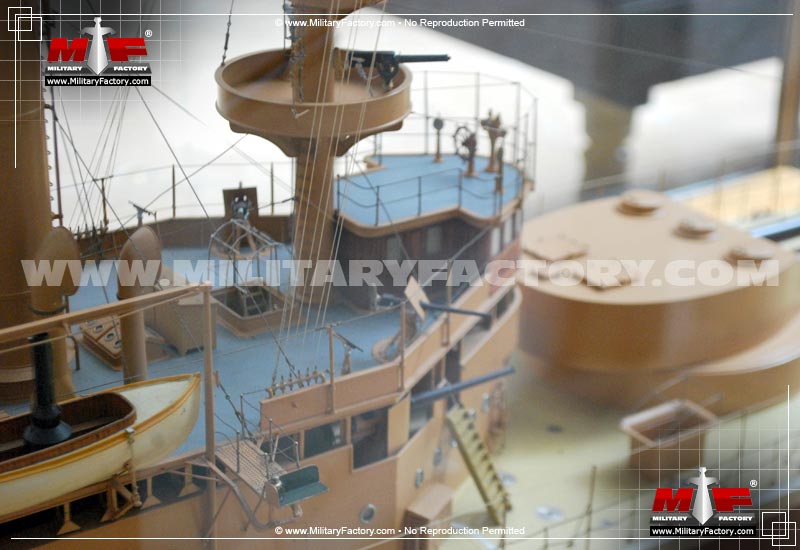
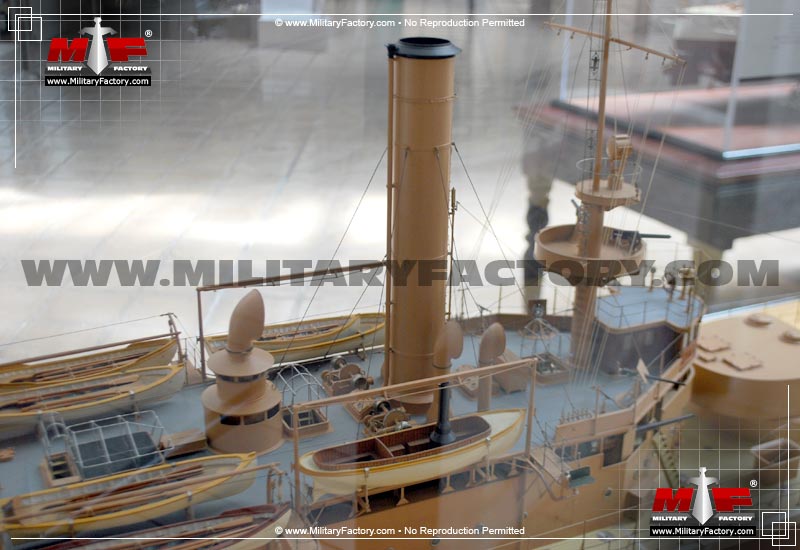
Plans originaux :
https://catalog.archives.gov/search?pag ... ng%20(1859)
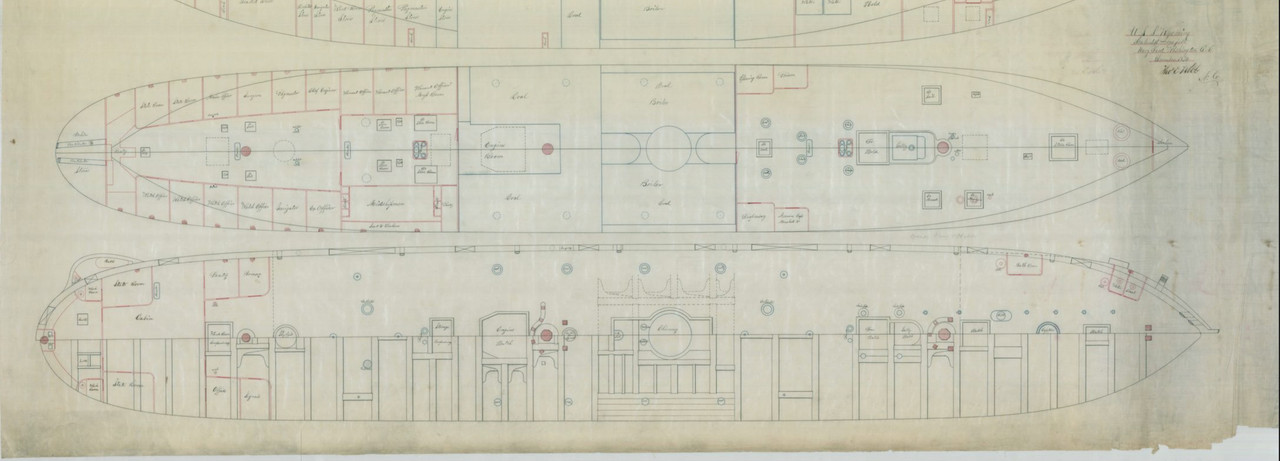

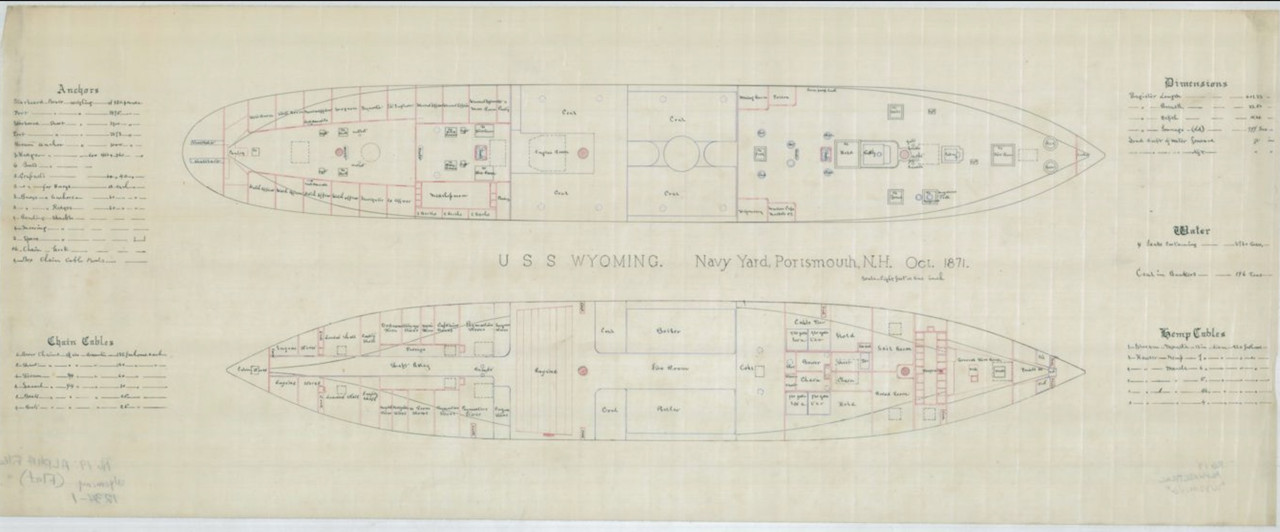
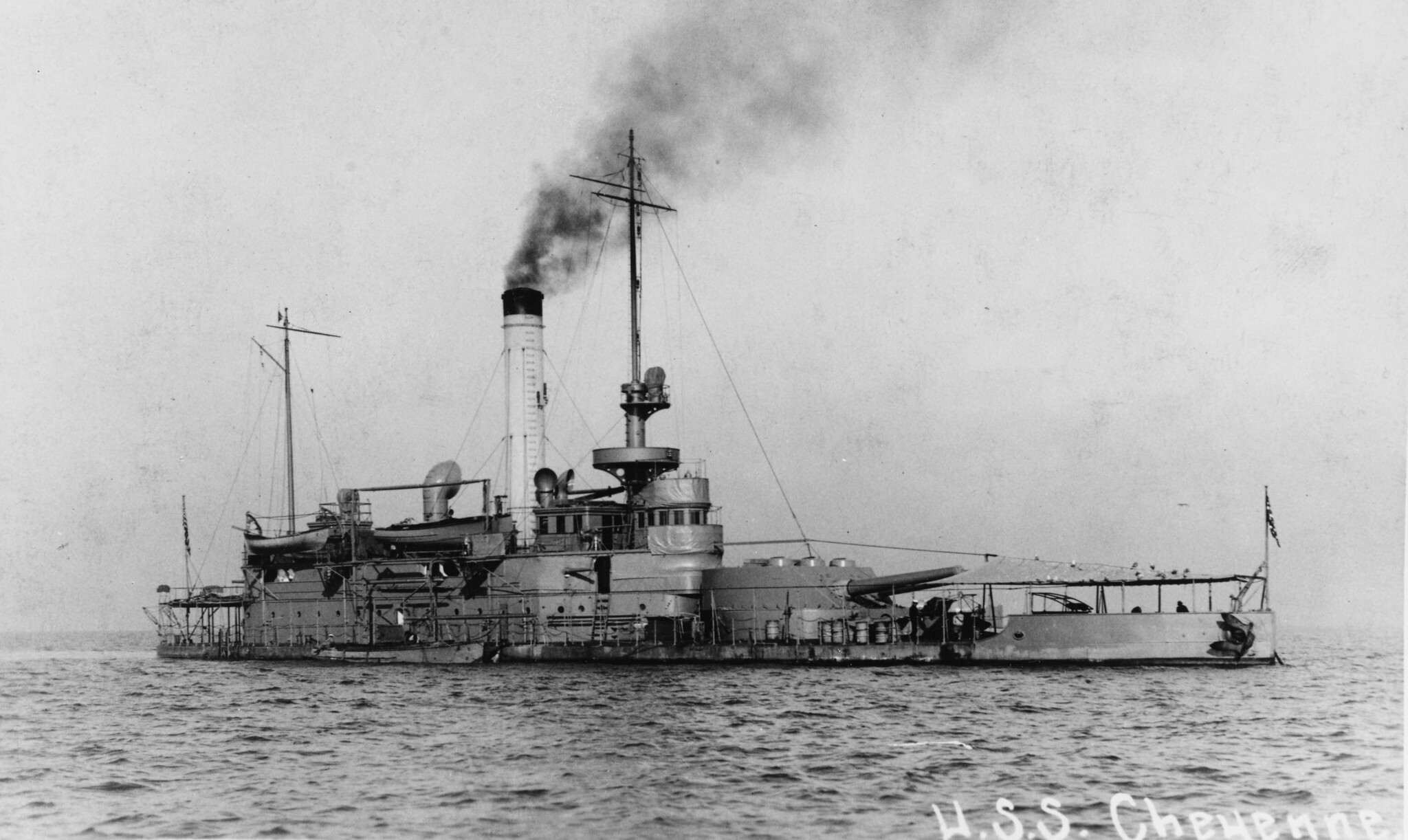
Uss Florida (BM-9)
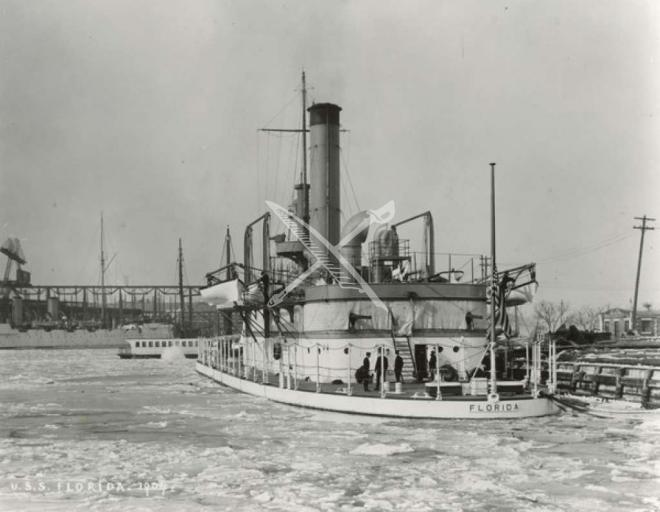
USS Wyoming BM-10
par Bob Cicconi
1/700 USS Wyoming BM-10 (IHP).
http://www.modelshipgallery.com/gallery ... index.html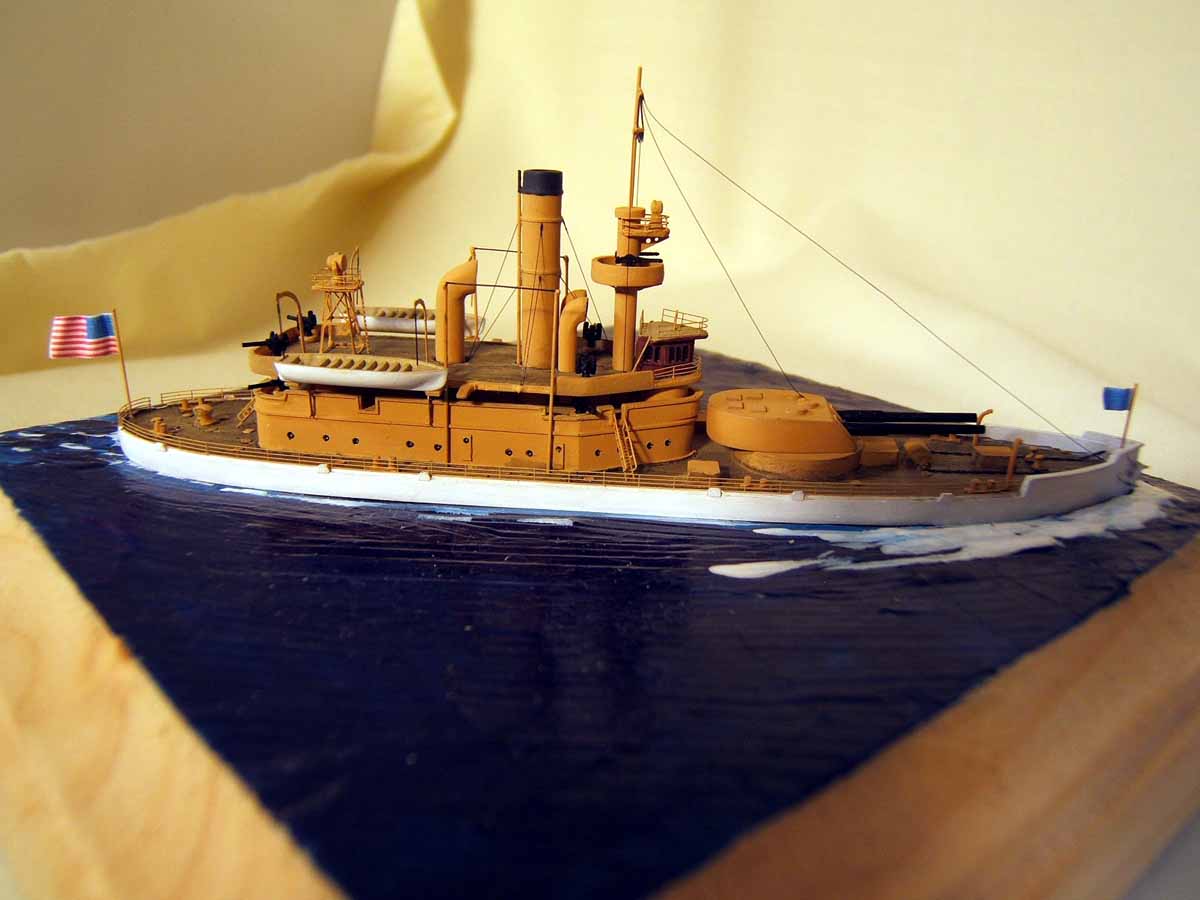
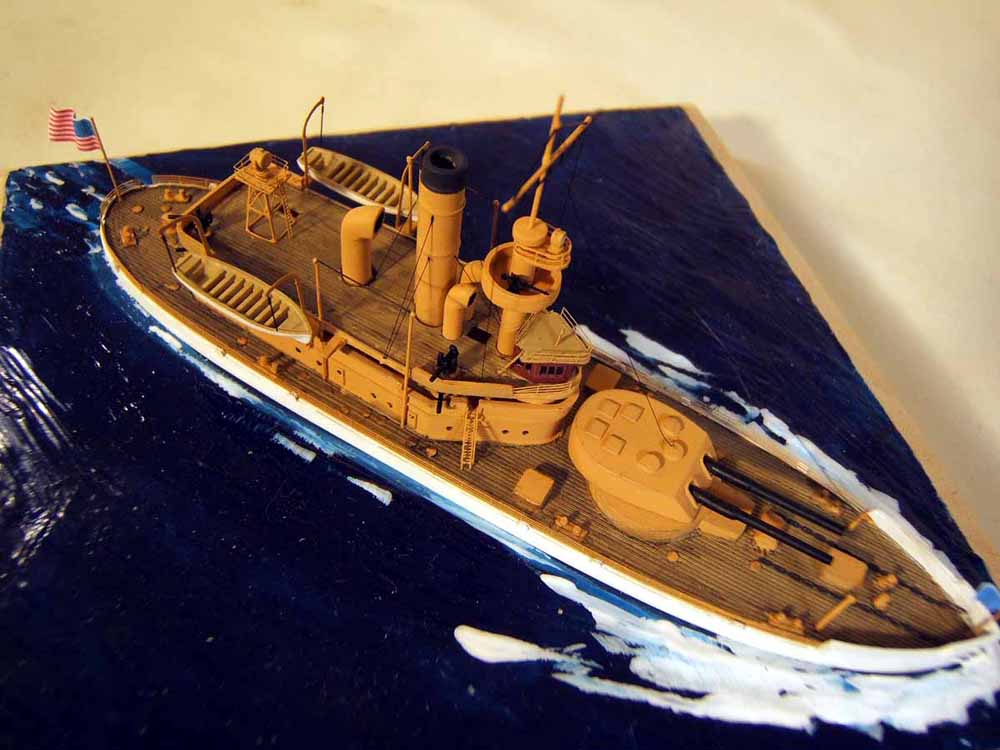
[img]<a%20href=[/img]

" />
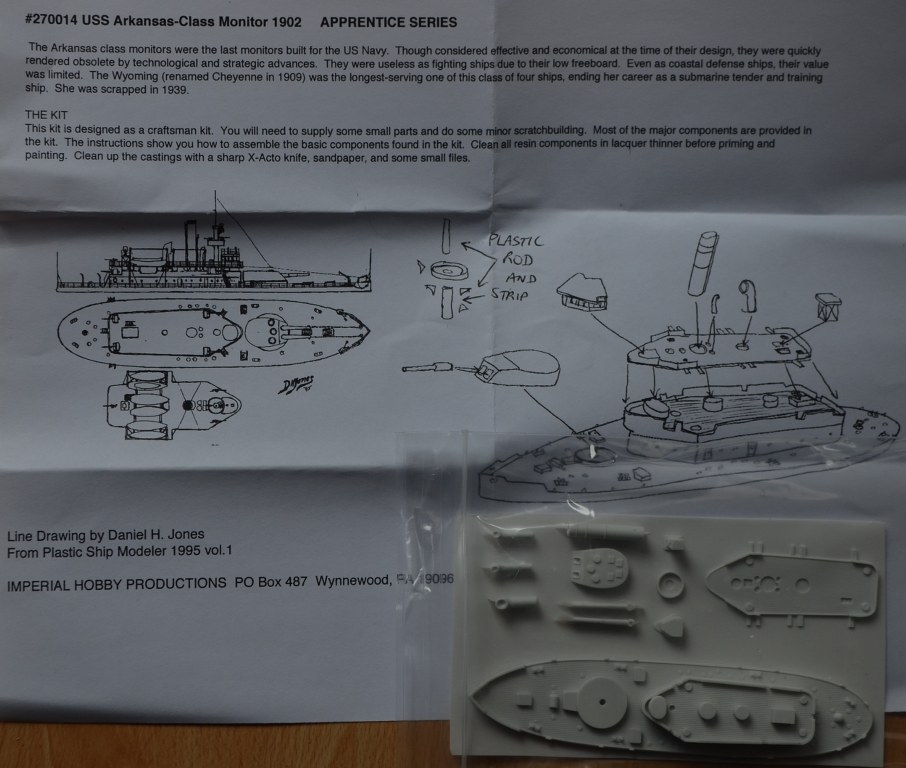
Revue du kit 1/700 IHP par Timothy Dike :
http://www.modelwarships.com/reviews/sh ... eview.html